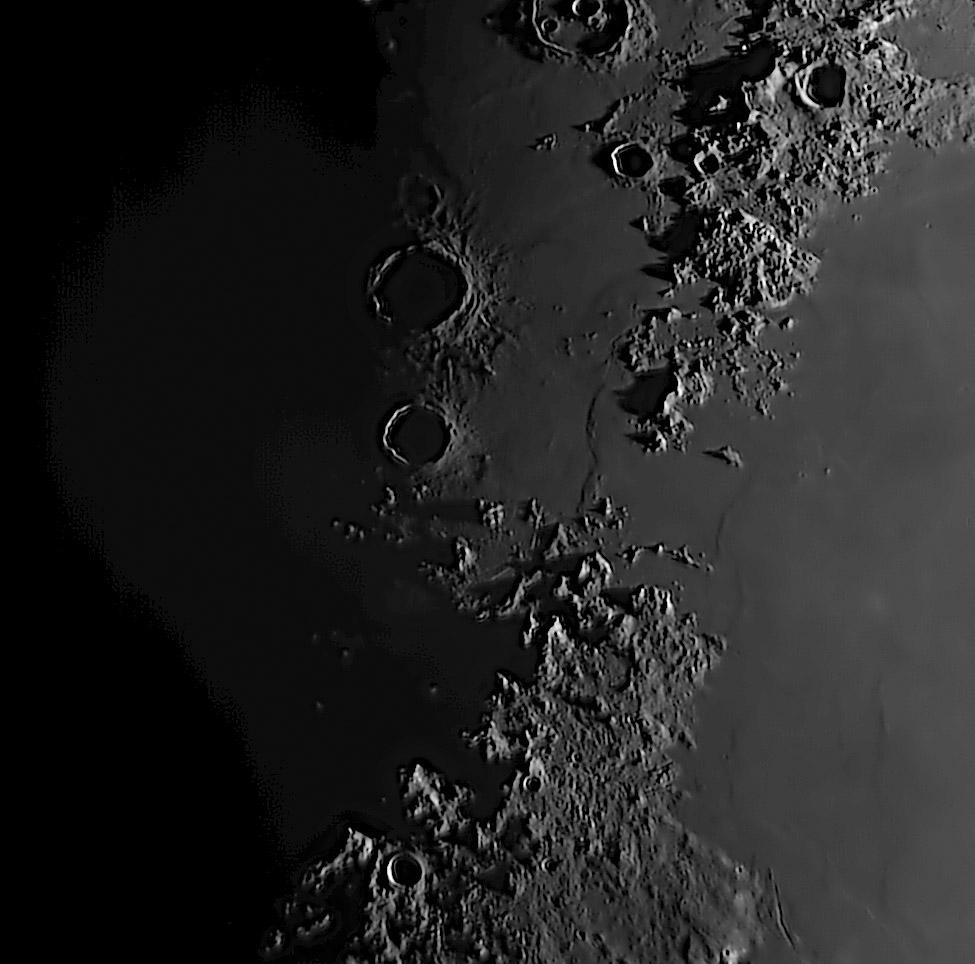Difference between revisions of "March 12, 2014"
| Line 3: | Line 3: | ||
<!-- ws:start:WikiTextHeadingRule:0:<h1> --> | <!-- ws:start:WikiTextHeadingRule:0:<h1> --> | ||
<!-- ws:start:WikiTextLocalImageRule:6:<img src="/file/view/LPOD-Mar12-14.jpg/495161738/LPOD-Mar12-14.jpg" alt="" title="" /> -->[[File:LPOD-Mar12-14.jpg|LPOD-Mar12-14.jpg]]<!-- ws:end:WikiTextLocalImageRule:6 --><br /> | <!-- ws:start:WikiTextLocalImageRule:6:<img src="/file/view/LPOD-Mar12-14.jpg/495161738/LPOD-Mar12-14.jpg" alt="" title="" /> -->[[File:LPOD-Mar12-14.jpg|LPOD-Mar12-14.jpg]]<!-- ws:end:WikiTextLocalImageRule:6 --><br /> | ||
| − | <em>image by [mailto:lujafer@gmail.com | + | <em>image by [mailto:lujafer@gmail.com Luis J. Fernández], Barcelona, Spain</em><br /> |
<br /> | <br /> | ||
| − | This is a fascinating image because of the way it has been processed. The mountains are full of angular roughness but the maria look like they have been filtered to smooth out details, as if the lava flows were very fluid and froze with a nice smooth surface. This treatment emphasizes the broad surfaces of the maria rather than their details, and makes the mountains stand out as sharply different terrains. One thing that pops out is a broad swell east of Aristillus and pushing up against the south part of the Caucasus Mountains. LRO QuickMap [http://bit.ly/1fSLcNE | + | This is a fascinating image because of the way it has been processed. The mountains are full of angular roughness but the maria look like they have been filtered to smooth out details, as if the lava flows were very fluid and froze with a nice smooth surface. This treatment emphasizes the broad surfaces of the maria rather than their details, and makes the mountains stand out as sharply different terrains. One thing that pops out is a broad swell east of Aristillus and pushing up against the south part of the Caucasus Mountains. LRO QuickMap [http://bit.ly/1fSLcNE shows] that this swell rises about 400 m above the mare to the west, and is partly made of the older lavas cut by the Theaetetus Rilles, but includes Imbrium lavas too. Many swells face up against individual mountains or mountain walls, but I don't know why.<br /> |
<br /> | <br /> | ||
| − | <em>[mailto:tychocrater@yahoo.com | + | <em>[mailto:tychocrater@yahoo.com Chuck Wood]</em><br /> |
<br /> | <br /> | ||
<strong>Technical Details</strong><br /> | <strong>Technical Details</strong><br /> | ||
| Line 14: | Line 14: | ||
<strong>Related Links</strong><br /> | <strong>Related Links</strong><br /> | ||
<em>[http://lpod.wikispaces.com/21st+Century+Atlas+of+the+Moon 21st Century Atlas]</em> chart 11.<br /> | <em>[http://lpod.wikispaces.com/21st+Century+Atlas+of+the+Moon 21st Century Atlas]</em> chart 11.<br /> | ||
| − | Luis' astronomy [http://www.youtube.com/watch?v=xw9GwlJIcHQ | + | Luis' astronomy [http://www.youtube.com/watch?v=xw9GwlJIcHQ video] and [http://astrorionis.blogspot.com.es blog]<br /> |
<br /> | <br /> | ||
<hr /> | <hr /> | ||
Revision as of 18:16, 11 January 2015
Smoothed Plains

image by Luis J. Fernández, Barcelona, Spain
This is a fascinating image because of the way it has been processed. The mountains are full of angular roughness but the maria look like they have been filtered to smooth out details, as if the lava flows were very fluid and froze with a nice smooth surface. This treatment emphasizes the broad surfaces of the maria rather than their details, and makes the mountains stand out as sharply different terrains. One thing that pops out is a broad swell east of Aristillus and pushing up against the south part of the Caucasus Mountains. LRO QuickMap shows that this swell rises about 400 m above the mare to the west, and is partly made of the older lavas cut by the Theaetetus Rilles, but includes Imbrium lavas too. Many swells face up against individual mountains or mountain walls, but I don't know why.
Chuck Wood
Technical Details
2014-03-08 20:38: UT. Celestron C8 SC, mount CGEM, Camera ZWO ASI 120MC with IR PRO 740 filter.
Related Links
21st Century Atlas chart 11.
Luis' astronomy video and blog



